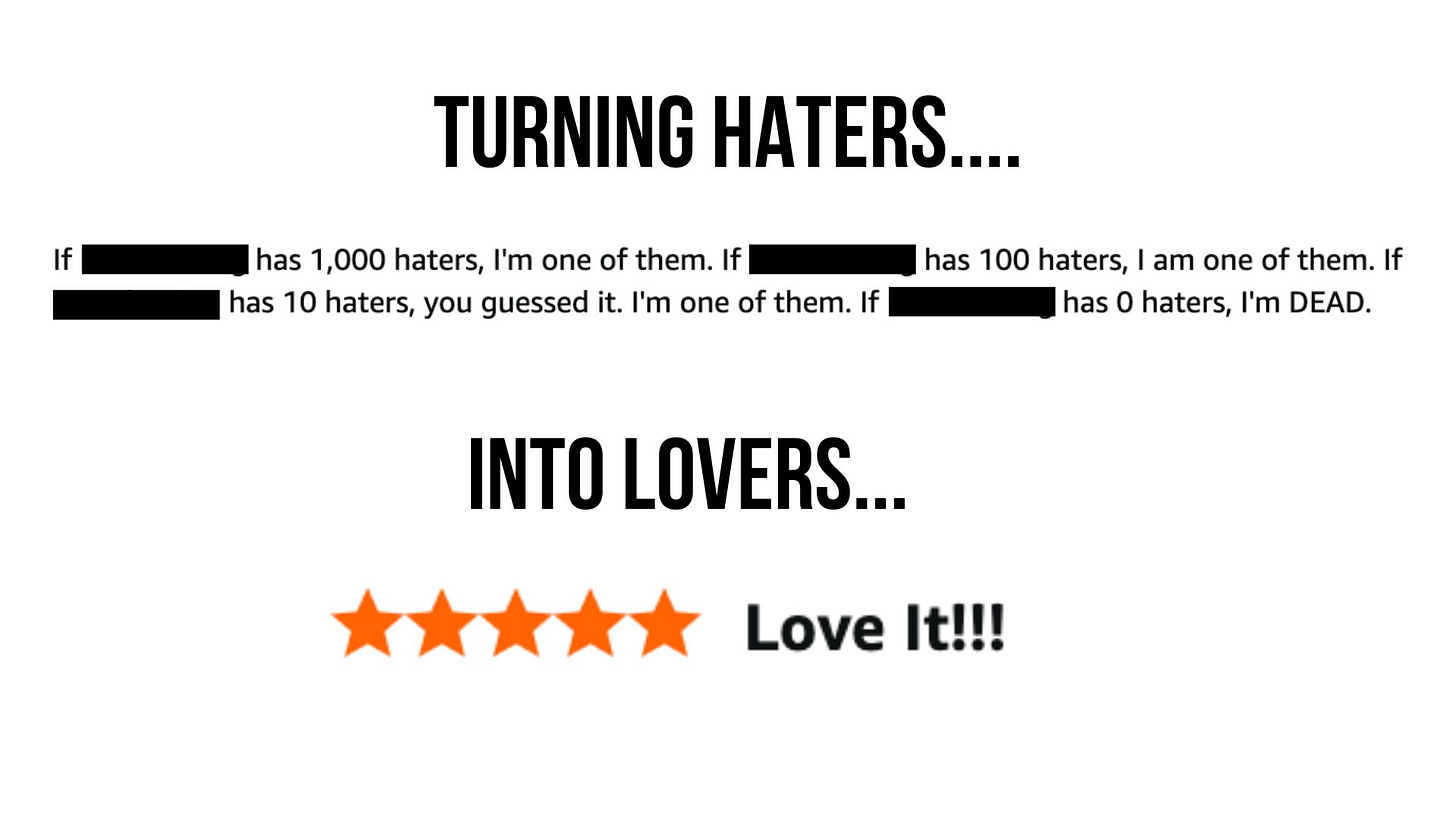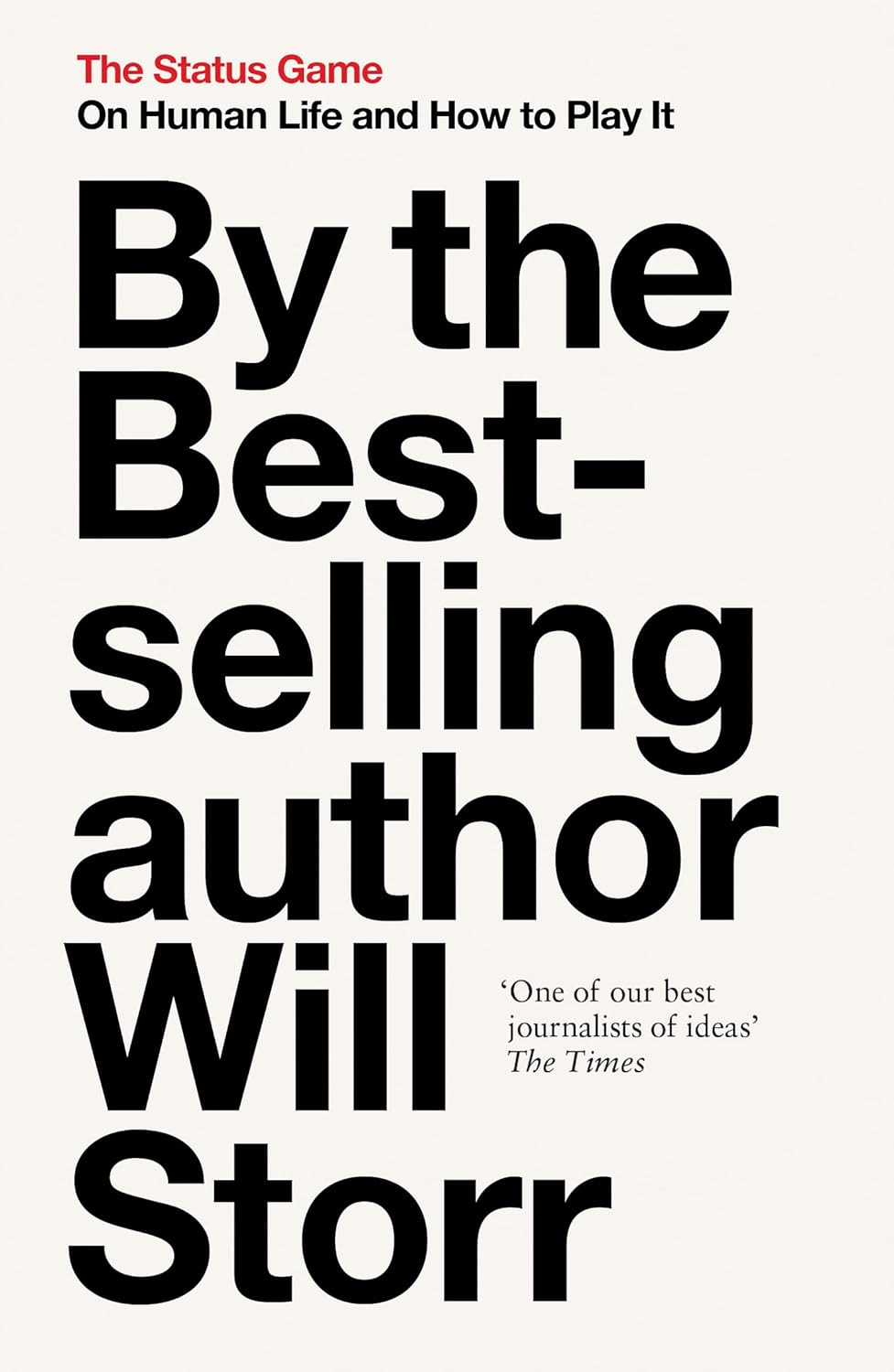1-Star Reviews Are Goldmines
✏️ Bring a pickaxe and some tissues ✏️
Sorry for the late email today. This weekend was the Creatorwood Summit, and I’ve been in bug-smashing mode since.
If you didn’t attend, you missed out on some awesome free bonuses.
The good news is that this week (hopefully Wednesday), I’ll be sharing the recordings with everyone for free on the Creatorwood YouTube channel.
Now, I want to get into a topic that is quite taboo in publishing.
1-Star Reviews.
What if I told you the next bestseller is hidden in the angry, frustrated, vitriolic keyboard-clanking 1-star review?
The Power of Reverse Benchmarking
This is a new marketing superpower for authors (maybe I’ll have to do another edition of my card deck one day 😉).
Reverse Benchmarking is when you look at what readers don’t like about other stories and use this to write and market a story that will please them.
Focusing on why bestsellers are loved by readers and how you can emulate that is certainly important.
But what if you looked at the one-star reviews and asked yourself:
What expectations did readers have going into the story that weren’t met?
What did they find annoying about the story?
What did they wish was included in the story but wasn’t?
The answers to these questions lie sparks for new story ideas, story gaps, and ways to frame your book marketing.
3 Steps to Analyzing 1-Star Reviews
Step #1: Decide what books you want to analyze.
I’d go for bestselling books in your genre or target market OR stories that reach tangential audiences that you think you can serve.
Create a list of 5 to 10 stories to start. Being able to look at 1-Star Reviews from multiple sources rather than 1 will allow us to do a better analysis.
Step #2: Go to Amazon and collect the 1-star reviews.
You can either manually copy and paste chosen 1-star reviews (or all of them) into a Google Sheet with each book as a new column in the sheet.
OR you can use this scraper on Apify (or something similar) to scrape reviews en masse from Amazon product pages.
Step #3: Identify patterns in the 1-star reviews and think of ways you can satisfy these readers.
You can do this manually just by reflecting on the reviews in your spreadsheet.
OR, you can download the spreadsheet of your 1-Star Reviews, upload it into ChatGPT, Gemini, or Claude, and type in the following prompt (or something similar):
“I’ve uploaded a spreadsheet of 1-star reviews for several bestselling books in [insert your genre]. Please analyze these reviews and identify:
Patterns: What recurring complaints, unmet expectations, or frustrations do readers share across multiple books?
Reader Expectations: Based on the reviews, what assumptions or hopes did readers bring into these books that weren’t fulfilled?
Opportunities: What ideas, tropes, or themes do readers say they wish had been included but weren’t?
Marketing Angles: How could I frame my book’s description, tagline, or positioning to show readers that my story avoids these pitfalls?
Story Gaps: Suggest specific plot, character, or world-building opportunities that I could explore to meet these unmet desires.
Please provide your analysis in a structured format (e.g., bullet points grouped by theme), and make the insights as actionable as possible for both writing (improving the story itself) and marketing (how to pitch it to readers).
See ya soon 👋
Between the Creatorwood Summit recordings and new Beyond the Book podcast, I’ve got 9 videos releasing this week 😂.
I would be super grateful if you tuned in. There’s lots of useful information, and you get to see the Movie Machine by Creatorwood in action.
It’s early days for us – we will be in beta for the foreseeable future. For everyone who has joined Creatorwood already, we are so grateful. We will be opening invites to the public once we roll out of beta.
In the meantime don’t forget…
Together we are boundless,
Michael Evans
The Author Sidekick
P.S. Found this cover when browsing Amazon for research for this essay. And I LOVE IT.




Cool idea about the 1-star reviews. I'm sharing this with my critique group (with proper acknowledgment of where I found it, of course!).
I've found some of them very helpful for improving my writing.